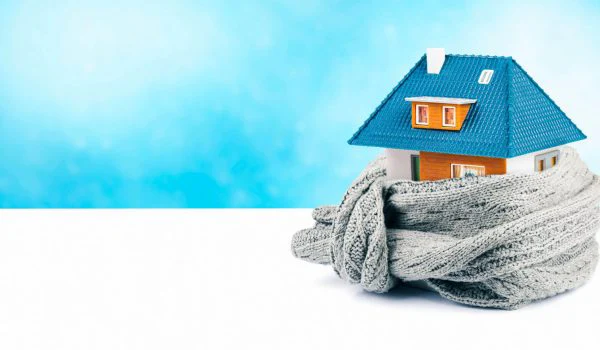Los Angeles homes deal with warm, dry summers and cooler, damp nights in winter. Roofs bake under sun for most of the year, then release that stored heat into living spaces long after sunset. Attic insulation does most of the heavy lifting against that daily cycle. For many houses across the San Fernando Valley, Westside, and the Eastside, R38 insulation in the attic hits the sweet spot between comfort, energy savings, and code compliance.
What R38 Means and Why It Fits LA’s Climate
R-value measures resistance to heat flow. Higher numbers slow heat transfer better. R38 means the attic has enough insulation thickness and density to significantly reduce heat gain in summer and heat loss in winter. Southern California building codes commonly target R30 to R38 for attics, and many 1950s to 1990s homes in Los Angeles sit far below that.
In practical terms, R38 helps maintain a steadier indoor temperature through long Valley afternoons and coastal foggy mornings. Air conditioners cycle less, furnaces run shorter, and rooms feel more even from front to back.
Where R38 Usually Pays Off
Most single-family homes from Pasadena to Playa Vista benefit from an R38 attic, especially if the current insulation is R0 to R19, which is common in older bungalows, ranches, and additions. In hillside homes with complex rooflines, R38 reduces hot spots under low-slope sections and knee walls. In two-story homes in Sherman Oaks or Culver City, it eases the heat stack effect that cooks upstairs bedrooms by early evening.
A small Spanish-style house in Highland Park with only a few inches of old batts can see a noticeable drop in afternoon ceiling temperatures once blown to R38. Owners often report running the AC later in the day and for shorter bursts.
Energy Savings Homeowners Can Expect
Every house performs differently, but field results across Los Angeles show meaningful reductions in cooling run-time after an attic upgrade to R38. Homes with central air typically save a noticeable chunk on peak-season bills. A common range is 10 to 20 percent annual HVAC energy savings for under-insulated attics brought up to R38, with higher returns in the Valley and lower but still solid returns along cooler coastal neighborhoods.
Another benefit is comfort stability. Thermostats cycle less. Rooms feel less drafty in winter and less stuffy in late afternoon. That comfort smooths out the daily temperature swings that make Los Angeles unique.
Material Options to Reach R38
Los Angeles homeowners often choose between blown-in fiberglass, cellulose, or fiberglass batts. The best option depends on attic access, existing insulation, and whether air sealing or rodent remediation is needed.
- Blown-in fiberglass: Clean, lightweight, and reliable across decades. Good for topping up over existing material, assuming it is dry and clean. Blown-in cellulose: Heavier and good at filling small gaps. It dampens sound and reduces convection in extreme heat, but it needs proper ventilation in humid attics. Fiberglass batts: A fit for open joist bays with enough depth. Batts need careful installation to avoid gaps, compression, or misalignment around wiring and can lights.
Installers often combine air sealing at penetrations with a blown-in system to reach R38 efficiently across uneven framing.
Air Sealing and Ventilation Matter as Much as R-Value
Insulation slows heat flow, but air leaks defeat it. In Los Angeles attics, typical leak points include recessed lights, bath fans, top plates, wiring holes, and old chases. Sealing these before adding insulation prevents hot attic air from entering the living space and cold air from escaping in winter. The difference is measurable: fewer temperature swings and cleaner indoor air.
Ventilation is the other side of the equation. With proper soffit intake and ridge or gable exhaust, the attic stays drier and cooler. This extends roof life, reduces risk of condensation on cool winter nights, and stabilizes insulation performance. Many LA homes lack balanced ventilation; fixing that before or during an R38 upgrade pays long-term dividends.
Attic Insulation Los Angeles: Code, Rebates, and Practical Details
Los Angeles and many surrounding jurisdictions accept R30 to R38 for attics in most climate zones. Inspectors often look for depth markers and coverage uniformity. Expect approximately 10 to 14 inches of blown material to achieve R38, depending on product type and settled density.
Local utilities periodically offer rebates for attic insulation upgrades. Programs and amounts change, but homeowners across Los Angeles County can often qualify if they jump several R-levels and include air sealing. A quick check before scheduling work can reduce out-of-pocket costs.
Common Obstacles in LA Attics
A clean, open attic is rare in older properties. The most frequent obstacles include low-clearance eaves that need careful baffle installation, knob-and-tube remnants in pre-war homes that require electrical sign-off, and old, compacted insulation mixed with debris and pest droppings. Rodent contamination from roof rats is widespread near fruit trees and palm-lined blocks. In those cases, professional removal, sanitation, and sealing are crucial before adding new insulation.

Ducts in the attic add another layer. Leaky or uninsulated ducts waste the benefit of R38. Sealing ducts to standards and wrapping them to at least R6 makes the whole system work as intended.

How R38 Changes Daily Comfort
The shift shows up after the first hot week. In a typical Valley ranch, ceilings no longer radiate heat at 7 p.m. the way they did before. Bedrooms cool faster at night. In South LA and Mid-City, homes see fewer large swings between sunny front rooms and shaded back rooms. During winter cold snaps, the furnace cycles less often, and mornings feel less chilly on hardwood floors.
Homeowners also notice less outside noise, especially near freeways and busy corridors like the 405, 10, and 101. While insulation is not a soundproofing product, denser coverage tends to soften traffic hum and helicopter noise.
Installation Timeline and Cost Variables
Most attic insulation Los Angeles projects finish in a single day for homes under 2,500 square feet. Add time if removal, deep cleaning, rodent-proofing, or duct repairs are needed. Costs vary with attic size, access, debris removal, ventilation upgrades, and material choice. Projects that include air sealing and ventilation adjustments often yield the best results and better qualify for incentives.
Signs Your Home Is Ready for R38
- Uneven temperatures between rooms or floors, especially afternoon heat upstairs AC runs long cycles and struggles to maintain set temperature on hot days Old or patchy insulation visible at or below joist height Dusty air, odors from the attic, or evidence of rodent activity High bills during summer peaks despite a maintained HVAC system
Why Many Los Angeles Homeowners Choose Professional Installation
A DIY approach seems tempting, but real results depend on air sealing, depth accuracy at every bay, proper baffle placement, safe clearances around flues and recessed lights, and clean transitions at access hatches. Crews with experience in Los Angeles housing stock understand how to deal with tight eaves in Mar Vista, 1920s framing in Los Feliz, and tile-roof nuances common in Glendale and South Pasadena. The attention to prep and details separates an average job from a high-performing attic.
Pure Eco Inc: Local Insight, Practical Results
Pure Eco Inc works across Los Angeles, from Woodland Hills and Encino to Silver Lake, West Adams, and El Segundo. The team evaluates the attic, checks ventilation and ducts, documents air leaks, and proposes a straightforward plan to reach R38 with clean, durable materials. The process respects the home and the schedule. The crew sets depth markers, seals gaps, protects recessed fixtures, and confirms coverage at edges and behind knee walls.
Homeowners appreciate realistic expectations. The company explains what R38 will do, what it will not do, and how to maintain it. If rodent issues exist, Pure Eco insulation contractor Los Angeles Inc addresses them first, then builds the insulation system on a clean foundation.
What to Expect From a Site Visit
A technician inspects the attic, measures existing insulation, takes photos of key areas, and checks for moisture, wiring issues, and ventilation paths. The visit usually takes 30 to 60 minutes. After the assessment, homeowners receive a clear scope that lists materials, target R-value, sealing points, ventilation adjustments if needed, and any remediation steps. Scheduling is flexible, and most projects wrap in a day.
Ready to Upgrade to R38?
An attic tuned to R38 is a practical step for comfort and efficiency in Los Angeles. It helps AC units work less during heat waves and keeps winter mornings from feeling raw. If the attic looks thin, messy, or contaminated, or if rooms swing hot and cold, it is time to get eyes on it.
Pure Eco Inc is available for a quick assessment across Los Angeles and nearby cities. Call to schedule an inspection, request a quote, or ask about current rebates. A well-insulated attic makes daily life easier in a climate that pushes homes hard, and R38 is a proven standard that delivers.
Pure Eco Inc. provides professional attic insulation and energy-saving solutions in Los Angeles, CA. For over 20 years, our family-owned company has helped homeowners improve comfort, reduce utility bills, and make their homes more energy efficient. We specialize in insulation upgrades, spray foam installation, and attic cleanup for homes across Los Angeles County. At Pure Eco Inc., we believe in treating our customers like family and creating a greener, healthier living environment for every household we serve. Call today to schedule an attic insulation inspection or get a free estimate.
Pure Eco Inc.
422 S Western Ave #103
Los Angeles,
CA
90020,
USA
Phone: (213) 256-0365
Website: https://www.pureecoinc.com
Social Media: Facebook | X | Instagram | Yelp
Map: View on Google Maps